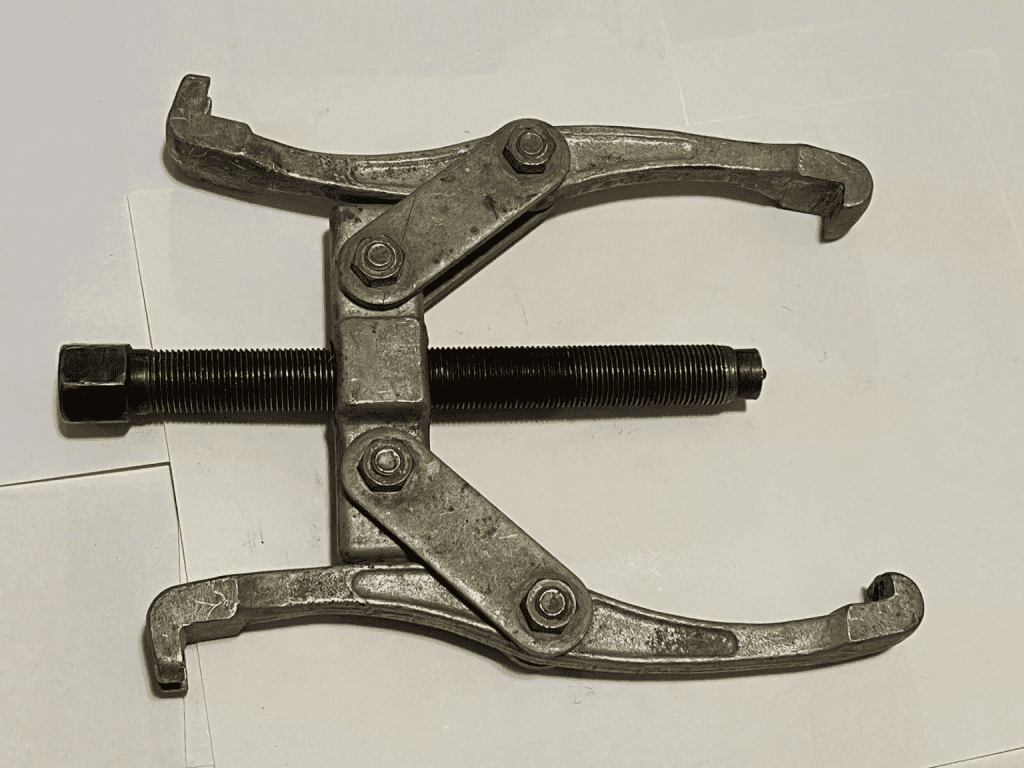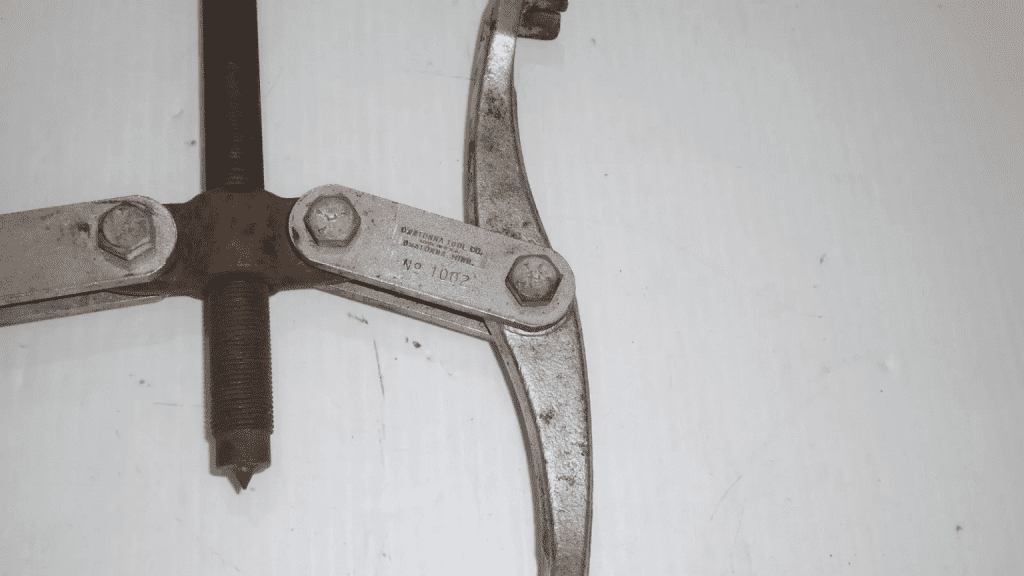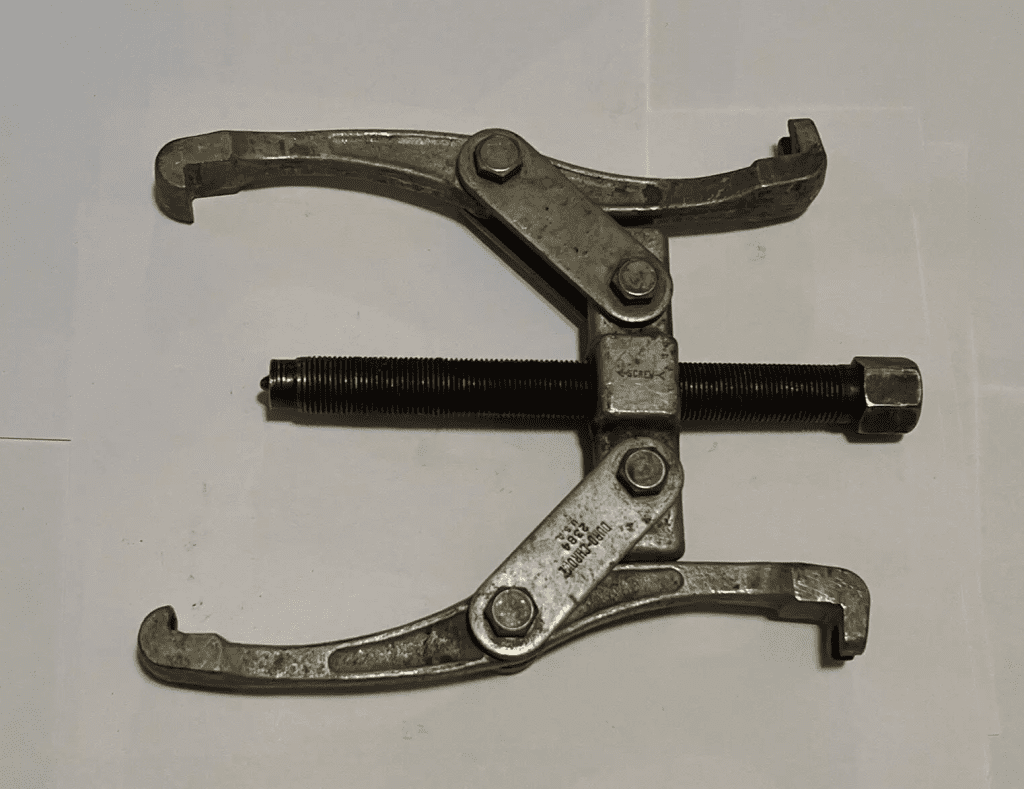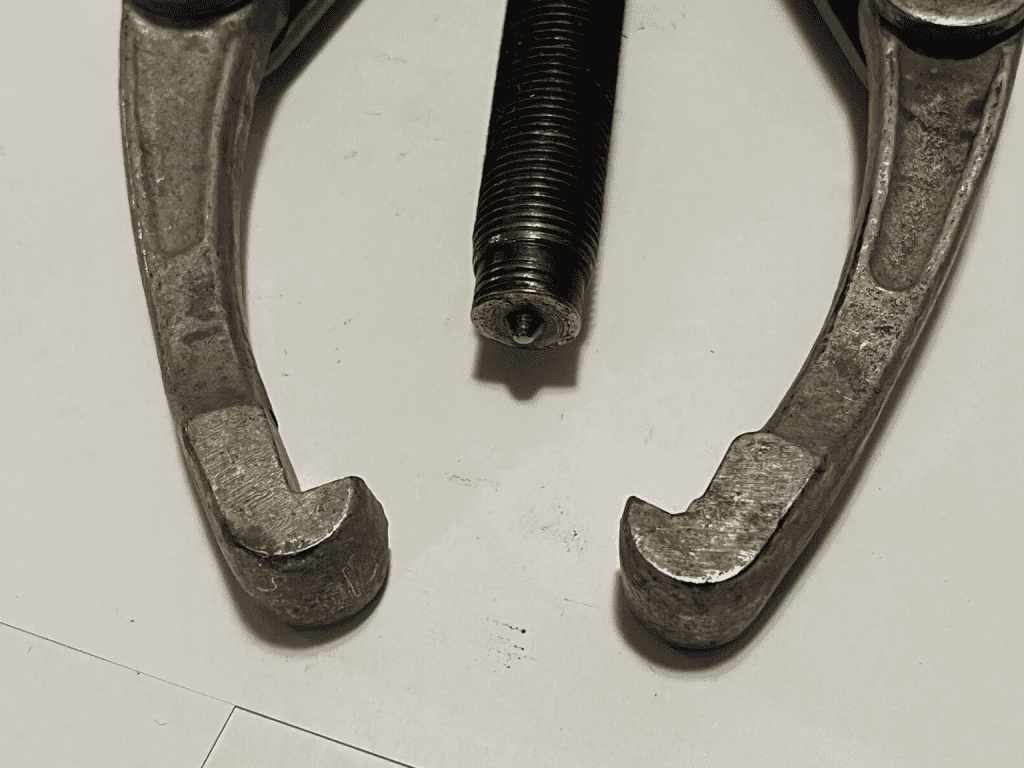This vintage piece was noted for its specific use and impressive durability.
The gear puller, a seemingly simple yet ingenious tool, has played a pivotal role in mechanics and engineering since its development in the late 19th and early 20th centuries. Its invention revolutionized the repair and maintenance industries, offering an efficient and reliable method for removing gears, bearings, and pulleys from shafts without causing damage. This article delves into the history, usage, and enduring legacy of the vintage gear puller, a tool that continues to be valued for its practicality and craftsmanship.

Origins of the Gear Puller
The gear puller was developed during a time when the industrial revolution was in full swing, and mechanical systems were becoming increasingly complex. Prior to its invention, removing components like gears and bearings was a laborious task that often resulted in damage to both the part and the surrounding machinery. Mechanics relied on rudimentary tools or brute force, which posed a risk of damaging expensive and irreplaceable parts.
It wasn’t until the late 1800s that the need for a more precise solution became evident. The gear puller was designed to address this challenge. Early versions were manually operated, consisting of a central screw mechanism and a set of arms designed to grip the gear or bearing securely. These pullers provided a controlled way to extract components from shafts without inflicting damage, which was a breakthrough in the mechanical and automotive industries.
How the Gear Puller Revolutionized Repair
The gear puller’s impact on repair work was immediate and significant. By providing mechanics with a tool that allowed for the safe removal of parts, it greatly improved the efficiency of maintenance work. The primary function of a gear puller is to exert a controlled pulling force on the gear or bearing, extracting it from its position on a shaft.
Typically, a gear puller consists of:
- A central screw that applies pressure.
- Two or three arms that clamp around the gear or bearing.
- A gripping mechanism that secures the tool in place.
Once the tool is secured, the mechanic tightens the central screw, which gradually pulls the gear or bearing from the shaft. This mechanism is simple but effective, ensuring that components are removed without any damage.
The Vintage Gear Puller: Manually Operated Efficiency
Vintage gear pullers were designed for manual operation, requiring the user to apply force through a hand-operated screw. Despite their simplicity, they were highly effective for delicate and intricate operations. These early gear pullers were invaluable in workshops, especially in the automotive and industrial sectors, where precision was paramount.

Mechanics appreciated these tools for their durability and reliability. They allowed workers to perform delicate tasks with a level of accuracy that was previously unattainable. The ability to safely remove gears, pulleys, and bearings meant that machinery could be repaired and maintained more efficiently, reducing downtime and prolonging the lifespan of mechanical components.
Evolution of the Gear Puller
As technology advanced, so too did the gear puller. While the original vintage models were manually operated, modern versions have evolved to incorporate hydraulic and pneumatic systems, making them even more efficient and easier to use. These advancements allow for greater pulling force, which is particularly useful when working with larger or more stubborn components.

However, despite the technological improvements, many mechanics and enthusiasts still appreciate vintage gear pullers for their craftsmanship and durability. The simplicity of the design means that these tools are still highly effective for certain tasks, and their historical significance makes them a valuable addition to any tool collection.
The Legacy of the Gear Puller
The legacy of the gear puller lies in its lasting impact on mechanical repair and maintenance practices. The introduction of this tool represented a significant leap forward in precision work, allowing mechanics to safely and efficiently handle tasks that were previously risky and time-consuming. The gear puller set the stage for the development of more advanced tools that continue to serve the same fundamental purpose today.

Collectors and mechanical enthusiasts alike treasure vintage gear pullers not only for their practical applications but also for their historical value. These tools symbolize the innovation that emerged during the industrial revolution and the transition into modern mechanics. They are often found in museums and antique collections, serving as reminders of the evolution of mechanical engineering and the importance of tool-making in industrial history.
Vintage Gear Pullers: A Collectible and Functional Tool
For many, vintage gear pullers are more than just tools—they are pieces of history. Collectors appreciate them for their design, durability, and craftsmanship. The solid construction and attention to detail in these early tools ensure that many of them are still functional today, decades after their initial manufacture.

While modern hydraulic and pneumatic pullers have made the process easier for large-scale operations, vintage gear pullers remain in use by hobbyists and mechanics who value the hands-on approach. Their continued relevance in the modern workshop highlights the lasting quality of these early tools.
Conclusion: A Testament to Mechanical Ingenuity
The vintage gear puller stands as a testament to the ingenuity of early mechanical tool design. From its humble beginnings as a solution to a common mechanical problem, the gear puller has evolved into a tool that is still essential in today’s repair and maintenance work. Its simplicity, effectiveness, and durability have ensured its place in both workshops and historical collections around the world.
As technology continues to advance, the legacy of the gear puller endures, reminding us of a time when manual tools were designed with precision and built to last. Whether you’re a mechanic, collector, or history enthusiast, the story of the gear puller is a fascinating chapter in the history of mechanical engineering.



